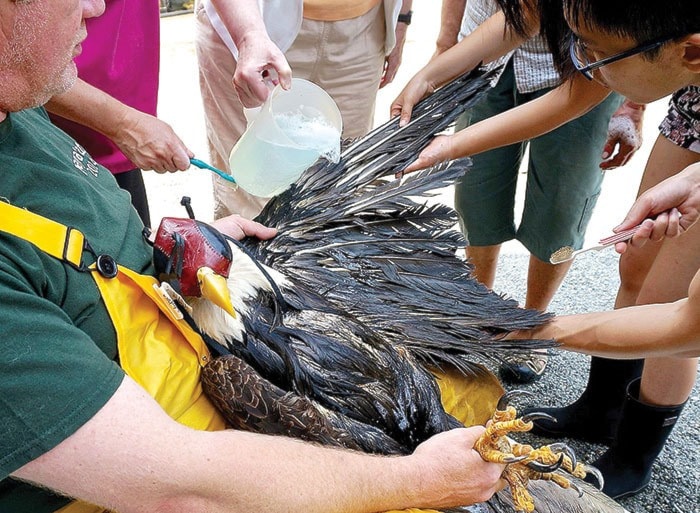The Mountainaire Avian Rescue Society, which treats almost 40 species at risk, is running out of facility space as record numbers of wildlife are in urgent need of care.
Pearl McKenzie, a volunteer board member of the Mountainaire Avian Rescue Society (MARS), said more than half of those patients come to MARS’ Merville facility from the area north of the Oyster River and most get into trouble because of human activities.
“Our caseload has almost doubled in the last few years, we’ve gone from an average of 400 to an average of 700,” McKenzie said during a presentation to the Strathcona Regional District board last Thursday.
Warren Warrtig, president of the MARS board, said this year MARS will exceed 800 patients, which is too many for MARS to ideally treat in its current space.
“Our existing facility is in a renovated garage and there’s shared space with the administration office and our lunch room,” Warrtig said. “We have no space to expand.”
MARS has purchased an almost 11 acre site on the Old Island Highway in Merville thanks to a significant amount of money bequeathed to the organization. But MARS is still in need of funding to actually build the new facility.
It has submitted a $320,000 application to the Island Coastal Economic Trust (ICET) and is looking for funding from local governments.
While the regional district did agree to send a letter of support for the ICET application, it held off on providing any funding as budget planning is coming up in the next couple of months.
MARS is hoping to secure the funding in order to build a new wildlife hospital and a caretaker’s residence.
The society is also looking to expand its operations by adding a Wildlife ECO Centre, which, if successful, the ICET grant would go towards.
“It would be a place where residents and visitors to the North Island can come to connect with wildlife and learn about the natural world,” McKenzie said. “On our existing property, we don’t have room for people to visit us. Most of our education consists of outreach.”
McKenzie said plans for the Wildlife ECO Centre include having closed circuit cameras so visitors can see animals receiving treatment first hand, with staff on hand to explain the process.
MARS also hopes to have a 120 feet by 40 feet wide by 24 feet long flight pen for recovering eagles, owls, pelicans, swans, hawks, osprey and other birds, with small windows for visitors to view the birds without disturbing them.
“We rescue and treat about 50 bald eagles a year and we badly need a flight pen for them,” McKenzie said. “We’d also like to have aviaries for our ambassador birds.”
MARS’ ambassadors, or educational birds, are former patients that MARS staff and volunteers take into schools and other community events to educate the public about the work MARS does and how the public can help keep wildlife safe.
One of its more well-known ambassadors, Shakespeare the barred owl, was nurtured back to health by MARS after losing one eye and fracturing his beak and sternum in a car accident.
Now the society is hoping, with a larger facility, to help even more wildlife like Shakespeare.
McKenzie said if MARS is successful in its fundraising efforts, construction of the Wildlife ECO Centre would begin in late summer or fall of 2016, with a targeted opening in May of 2017.
The first phase of the project, the wildlife hospital and caretaker’s residence, is expected to be complete in late spring or early summer of 2016.
